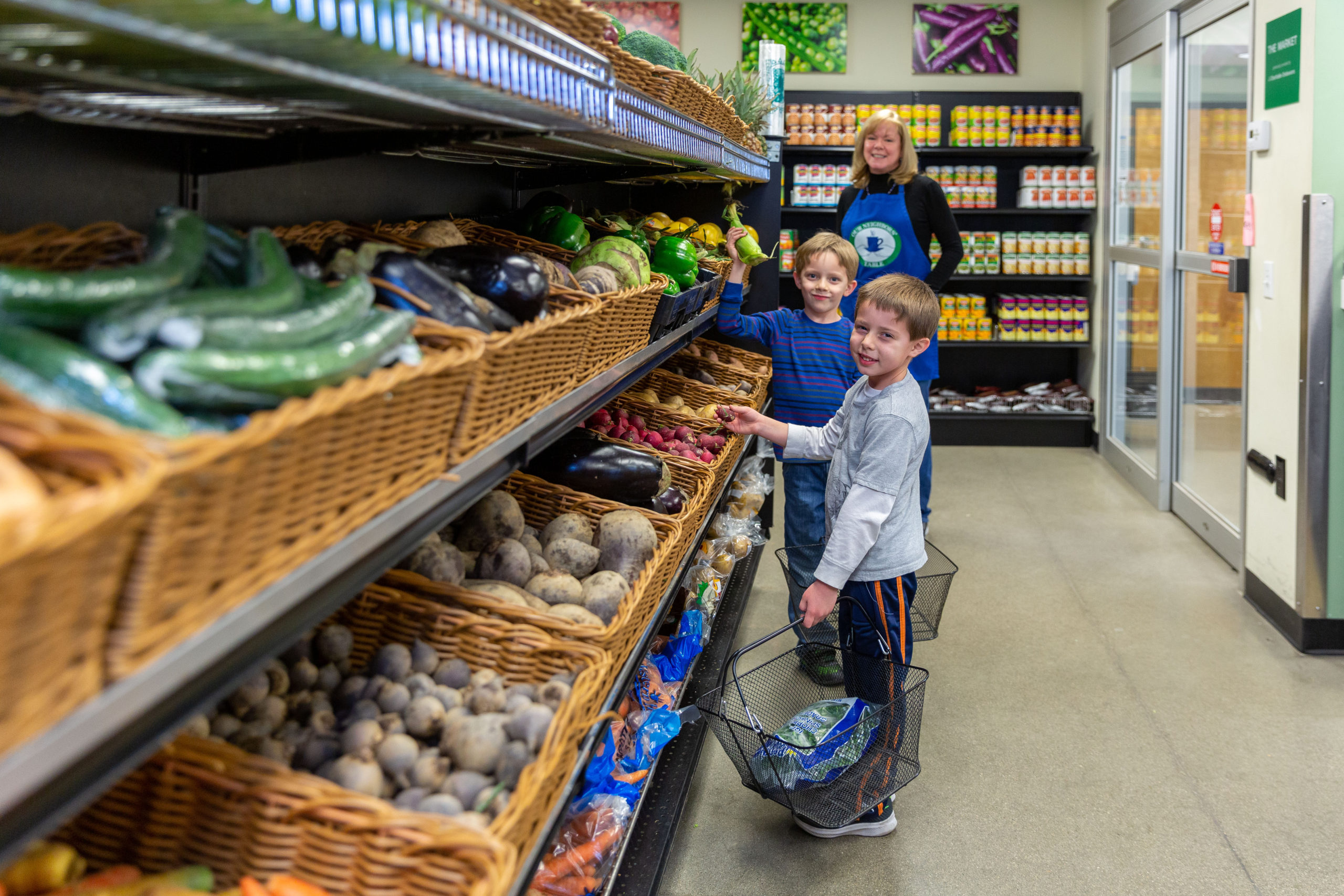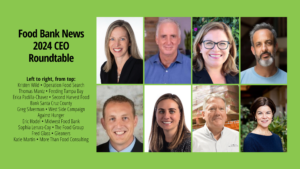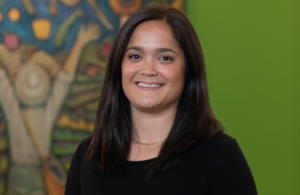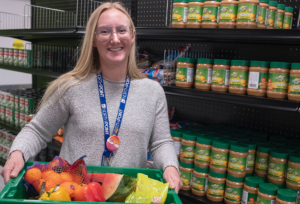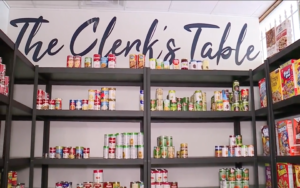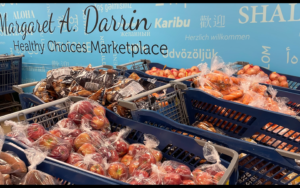The most crucial ingredient in Our Neighbors Table’s plan to bring food security to its region by 2029 is not food — it’s community involvement via an advisory group of local organizations.
Its Food Security Advisory Group, which includes local town officials, health care providers, schools and councils on aging, is the main vehicle Our Neighbors Table is relying on to provide universal access to food in each of the 12 Massachusetts communities it serves.
The emphasis on a collective approach reflects a growing recognition that a single organization’s ability to provide meals does not equal food security. Rather, cooperation between cross-sector community groups is more effective in providing universal access to food, however and wherever people need it.

“Now is the time for food security councils,” said Lyndsey Haight, Executive Director of the Amesbury, Mass.-based organization. “We’ve been beating that drum over the last five years.”
Our Neighbors Table’s path toward formally involving communities in its hunger-relief efforts began when it sought to knock down food insecurity, town by town, in the Northeast corner of Massachusetts in which it operates. It uses its Food Security Advisory Group to open up as many opportunities as possible for local residents to connect with reliable sources of nutritious food.
In one example, its relationship with Children’s Health Care, one of the area’s largest pediatric health care practices and an advisory group member, has enabled it to implement food insecurity screenings as part of the annual check-ups of all the clinic’s 16,000 pediatric patients.
Of those who were found to be food-insecure during the first six months of the program and referred, more than 70% accepted consultations with a food advocate, and the vast majority of those continue to access local programs. “So the engagement rate is really soaring,” Haight said.
Community connections also led Our Neighbors Table to partner with the public school system in nearby Newburyport to begin offering a summertime farmer’s market to students and their families, as well as teachers and staff. According to its 2019 annual report, the partnership increased the number of children regularly getting groceries from Our Neighbors Table markets by 67%.
Both programs owe their success to a massive amount of training undertaken by Our Neighbors Table. Using the Hunger Vital Sign tool, the agency provided extensive training on screenings and referrals in health care settings to every member of the pediatric practice, including front staff, billing staff, nurses and practitioners, and followed up with monthly support. Similarly, Our Neighbors Table trained all the school nurses in the Newburyport district, as well as all the elementary school teachers and staff on how to recognize food insecurity and talk about it.
The intense focus on training stems from Haight’s personal background in community building and family support. “It’s all about training and support and reinforcement and creating an environment where people can find the things they need,” Haight said.
A community-led response to food insecurity means that access to food responds flexibly to the changing needs of individuals. A senior citizen with no car who walks to a grocery store to purchase food using SNAP may have that access point closed off by moving to a housing authority. They then would turn to pop-up markets in the community, and eventually, food deliveries if they were to become ill and homebound.
This mindset of universal access is moving Our Neighbors Table away from counting pounds of food served to a goal of creating enough community access points where people don’t have to worry about food. The system should be resilient enough that even during a pandemic, people feel calm about their ability to access food. “We need to paint a picture of what the community looks like when everyone is food secure,” Haight said.
Looking forward, Our Neighbors Table is seeking to act as a resource for 15 or so smaller organizations that run pantries or meal delivery programs in its area. While Our Neighbors Table runs two food markets of its own, it also has enough capacity to lend storage space, transportation and even volunteers to smaller pantry programs. Such programs “are the champions and we need them to continue,” Haight said.
[Other organizations, including Warehouses4Good and MEND* of Essex County, NJ, are pursuing similar types of hub-and-spoke programs that bridge the gap between regional food banks and smaller pantry programs.]
In Haight’s view, large food banks do not have the relationships on the ground that permit them to mobilize volunteers in the community and invest local resources in the best possible way. In fact, her viewpoint jibes with the Greater Boston Food Bank’s recent decision to partner with community members such as local YMCAs as it seeks to expand pantry capacity in its region.
Our Neighbors Table’s approach is a three-legged stool that includes food access, public assistance and just as importantly, community awareness. “I do believe that food security requires community-level infrastructure and commitment,” Haight said.
CAPTION ABOVE: Our Neighbors Table’s grocery store-style food market in Amesbury, Mass., features fresh produce.
*Chris Costanzo, Editor of Food Bank News, is also a board member of MEND.
Like what you’re reading?
Support Food Bank News